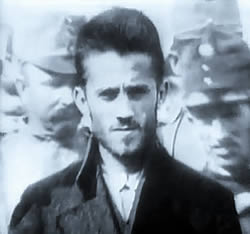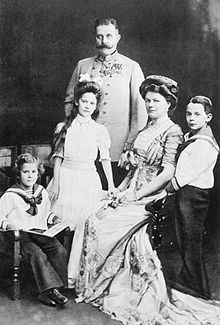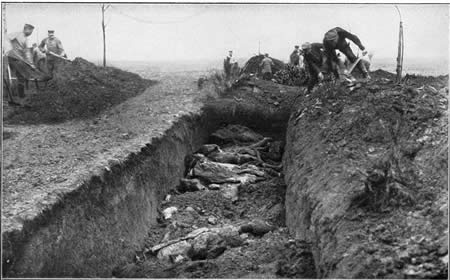19 year old Boy ignited World War 1 ?
 Gavrilo Princip outside the courthouse
Gavrilo Princip outside the courthouse
The immediate cause of world war -1 lay in the series of events triggered by the assassination of Archduke Franz Ferdinand of Austria and his wife, Sophie, on 28 June 1914. The assassin, Gavrilo Princip (1894 – 1918), was an ethnic Serb and Yugoslav nationalist from the revolutionary group Young Bosnia, which was supported by the Black Hand, a nationalist organization in Serbia.
Princip's Background
Princip's parents were poor farmers who lived off the little land that they owned. They belonged to a class of Christian peasants, who were often oppressed by their landlords and was forced to give one-third of income away to the landlord. Princip first began attending primary school in 1903, aged nine. He became very successful in his studies, for which he was awarded a collection of Serbian epic poetry by his headmaster. At the age of 13, Princip moved to Sarajevo, and was enrolled into a merchant school. Jovan, his older brother, paid for his tuition with the money he had earned performing manual labour, carrying logs from the forests surrounding Sarajevo to mills within the city. In 1911, Princip joined Young Bosnia, a society that wanted to separate Bosnia from Austria-Hungary and unite it with the neighbouring Kingdom of Serbia. In 1912, Princip was expelled from school for being involved in a demonstration against Austro-Hungarian authorities. Princip left Sarajevo shortly after being expelled and made the 280 kilometres (170 mi) journey to Belgrade on foot. He fell to his knees and kissed the ground upon crossing the border into Serbia.
 Archduke Franz Ferdinand of Austria with his wife Sophie and their three children
Archduke Franz Ferdinand of Austria with his wife Sophie and their three children
The Plot
Just before 10 a.m. on Sunday, 28 June 1914, the Archduke, Franz Ferdinand and his wife, arrived in Sarajevo by train, to oversee military training in Bosnia. The royal couple was then to take an automobile into the city. Franz Ferdinand and Sophie were in the second car. The car's top was rolled back in order to allow the crowds a good view of its occupants.
The seven conspirators lined the route. They were spaced out along the Appel Quay, each one with instructions to try to kill Franz Ferdinand when the royal car reached his position. At 10:15, when the six-car procession passed the central police station, nineteen-year-old student Nedeljko Čabrinović hurled a hand grenade at the Archduke's car. The driver accelerated when he saw the object flying towards him, but the bomb had a 10-second delay and exploded under the wheel of the fourth car. Two of the occupants, were seriously wounded. About a dozen spectators were also hit by bomb shrapnel.
After Čabrinović's bomb missed the car, five other conspirators, including Princip, lost an opportunity to attack because of the heavy crowds and the car's high speed. To avoid capture, Čabrinović swallowed a cyanide capsule and jumped into the Miljacka river to make sure he died. However, the cyanide pill was expired and only made him sick, and the river was only 10 centimetres (4 in) deep. A few seconds later he was hauled out and detained by police.
After a short rest at the Governor's residence, despite protestations from his wife Sophie, Ferdinand decided to visit the soldiers injured by the Bomb at the hospital. In order to avoid the city centre, General Oskar Potiorek, the Governor, decided that the royal car should travel straight along the Appel Quay to the Sarajevo Hospital.
However, this was off the planned route and the driver had not been informed of the change in plans and was not familiar with the new route. On the way to the hospital, the driver took a right turn into Franz Josef Street.
However, it is so happened that Gavrilo Princip was sitting in a café on the street just as Ferdinand's car began to pull into it. He spotted the car as it drove past, having taken the wrong turn. After realizing the mistake, the driver put his foot on the brake, and began to reverse. Princip seized his chance and ran out of the café with his pistol. Spotting him, the driver attempted to reverse faster, but his foot missed the accelerator pedal. In doing so the engine stalled and the gears locked, giving Princip his opportunity. Princip stepped forward, drew his pistol, an FN Model 1910, and at a distance of about 1.5 metres (4.9 ft) fired twice into the car, first hitting Franz Ferdinand in the neck, and then hitting his wife Sophie in the abdomen, after she instinctively covered his body. They both died before 11:00 am.
Princip attempted suicide with cyanide, but it was past-date, then tried to shoot himself, but the pistol was wrestled from his hand before he had a chance to fire another shot.
 Fallen British and Australian soldiers in a mass grave, dug by German soldiers, during world war -1, 1917
Fallen British and Australian soldiers in a mass grave, dug by German soldiers, during world war -1, 1917
Outbreak of the First World War
When Archduke Franz Ferdinand and is wife Sophie were assassinated, the reaction among the people in Austria was mild, almost indifferent. However the authorities encouraged the anti-Serb riots in Sarajevo. The assassination led to a month of diplomatic maneuvering between Austria-Hungary, Germany, Russia, France, and Britain called the July Crisis. Believing that Serbian officials (especially the officers of the Black Hand) were involved in the plot to murder the Archduke, and wanting to finally end Serbian interference in Bosnia, Austria-Hungary delivered to Serbia on 23 July the July Ultimatum, a series of ten demands that were made intentionally unacceptable, in an effort to provoke a war with Serbia. Serbia, declared that they accepted all the terms of the ultimatum, except article six, which demanded that Austrian Police be allowed in Serbia for the purpose of participation in the investigation into the assassination. Following this, Austria broke off diplomatic relations with Serbia, and finally, on 28 July 1914, Austria-Hungary declared war on Serbia. The crisis escalated as the conflict between Austria-Hungary and Serbia came to involve Russia, Germany, France, and ultimately Belgium, Great Britain etc.
Casualties in World War-I
The total number of military and civilian casualties in World War I was more than 38 million: there were over 17 million deaths and 20 million wounded, ranking it among the deadliest conflicts in human history. The total number of deaths includes about 11 million military personnel and about 7 million civilians. At least 2 million died from diseases and 6 million went missing, presumed dead. Nevertheless, disease, including the 1918 flu pandemic and deaths while held as prisoners of war, still caused about one third of total military deaths.
 Princip, seated centre of the first row, on trial on 5 December 1914
Princip, seated centre of the first row, on trial on 5 December 1914
Princip was 19 years old at the time and too young to receive death penalty, being only twenty-seven days short of the 20-year minimum age limit required by Habsburg law for the death sentence. Instead, he received the maximum sentence of twenty years in prison. He was held in harsh conditions which were worsened by the war, and contracted tuberculosis. He died on 28 April 1918, three years and 10 months after the assassination. At the time of his death, weakened by malnutrition and disease, he weighed around 40 kilograms. His body had become wracked by skeletal tuberculosis that ate away his bones so badly that his right arm had to be amputated.
The Museum of Young Bosnia was built in 1953, at the place where the assassination took place. At the front of the museum was a plaque, inscribed: "From this place, on 28 June 1914, Gavrilo Princip, expressed with his shot the people's revolt against tyranny and their centuries-old struggle for freedom. A statue was erected in Belgrade on 28 June 2015, unveiled by President of Serbia. The President held a speech, and said: "Princip was a hero, a symbol of liberation ideas, tyrant-murderer, idea-holder of liberation from slavery, which spanned through Europe".